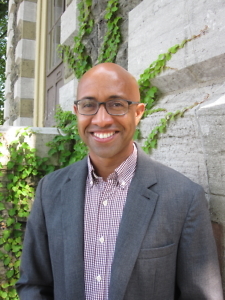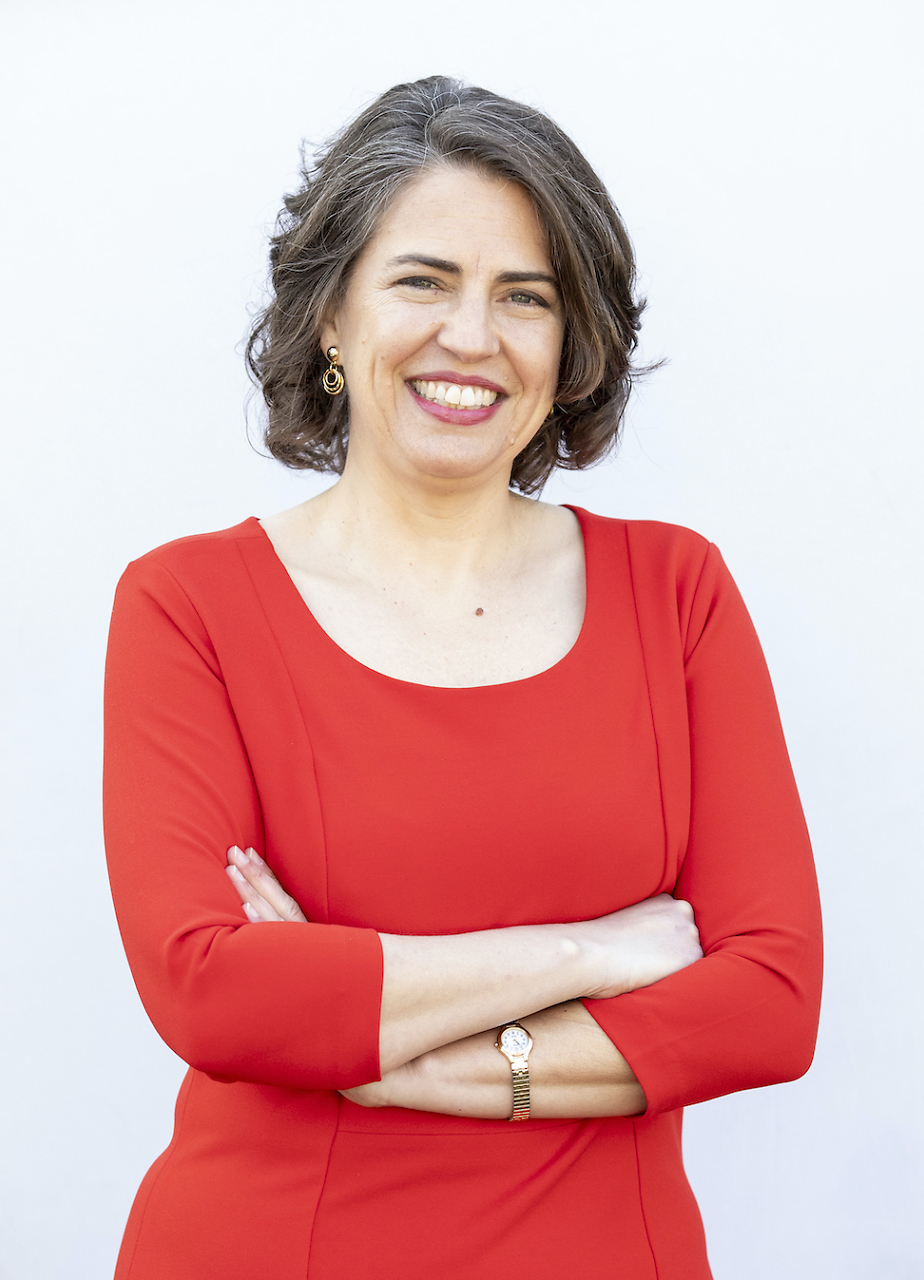Teaching Black Power
Russell Rickford recovers a “lost 1970s” through the history of independent black schools
In We Are an African People, Russell Rickford examines the flowering of independent black-nationalist and Pan-African schools during the late 1960s and early 1970s, as the ideas of Black Power spread across the country. This creatively conceived, deeply researched, and intellectually rigorous book is the winner of the 2016 National Book Award given by the Benjamin L. Hooks Institute for Social Change at the University of Memphis. The award recognizes the book that best furthers the understanding of the American civil-rights movement and its legacy.
 Russell Rickford is an associate professor of history at Cornell University. His work has appeared in such prestigious academic outlets as the Journal of American History, The Journal of African American History, and Souls: A Critical Journal of Black Politics, Culture and Society. He answered questions via email from Chapter 16:
Russell Rickford is an associate professor of history at Cornell University. His work has appeared in such prestigious academic outlets as the Journal of American History, The Journal of African American History, and Souls: A Critical Journal of Black Politics, Culture and Society. He answered questions via email from Chapter 16:
Chapter 16: Why did all these independent schools arise in the late 1960s and early 1970s? Who did they serve? What was their mission?
Russell Rickford: Dozens of private, “Pan-African Nationalist” schools, from preschool through post-secondary establishments, appeared nationwide during the 1960s and 1970s, the heyday of the Black-Power movement. Their proliferation reflected the resurgence of Pan-Africanist thought, a commitment to linking the cultural and political struggles of peoples of African descent throughout the world.
The rise of the schools also stemmed from a growing emphasis on African Americans creating independent cultural institutions that could transmit black consciousness and nurture a new generation of political leadership. Such independent black institutions were connected to other anticolonial education efforts in the Third World. The idea was that oppressed people needed to “decolonize” their minds—liberate themselves from Western and Eurocentric constructs and epistemologies—as they continued to struggle for political and cultural self-determination. Another major impetus for the schools was the rebirth of a strong African identity among African Americans. (Hence the title of the book—“We Are an African People,” a popular political slogan at the time.)
The schools were generally small and underfunded. They served the children of black activists, workers, artists, intellectuals, and others who wished to expose the next generation to a rigorously African-centered education. The institutions were run by committed organizers and members of urban Pan-African nationalist cadres. Most saw their mission as nurturing a sense of black nationhood. Beyond cultural identity, however, the schools also taught anti-imperialism and, to some degree, anti-capitalism.
Chapter 16: You describe the book as “a glimpse at a lost 1970s, a moment of political flux and cultural ferment whose creative social possibilities remain unfulfilled.” Can you explain what we learn through this intellectual history?
Rickford: My book is an intervention in the literature about both education and black politics in the “post-civil rights era.” On one hand, you have histories about the struggle for school desegregation in the late 1960s and 1970s. On the other hand, you have studies that emphasize the splintering of social movements during the same period. But African Americans were never concerned solely about racial segregation (strictly defined) in public education. Many also wished to arm their children with a sense of radical solidarity that transcended what even most liberals or multiculturalist educators envisioned. Furthermore, grassroots, African-American freedom struggles did not simply collapse or become deformed in the 1970s. On the contrary—the Pan-African nationalist movement was one expression of a vibrant quest for transnational blackness that peaked during that decade. So we need to rethink the story of the 1970s as merely a bridge between the idealistic 1960s and the conservative 1980s.
 Chapter 16: The schools do not arrive in a historical vacuum. What is the longer history of independent black education?
Chapter 16: The schools do not arrive in a historical vacuum. What is the longer history of independent black education?
Rickford: The history of independent black institutions in the U.S. is almost as old as the history of organized black struggle. You can certainly go back to the late-eighteenth and early-nineteenth centuries to trace black efforts to educate African-American children in autonomous schools. Those struggles greatly accelerated after Emancipation and remained a priority for many black folks throughout the dark years of Jim Crow.
In my book I emphasize “freedom schools” and “liberation schools” of the early- to mid-1960s as immediate precursors to the Pan-African nationalist establishments of the 1970s. The latter institutions, in turn, helped give rise to the “Afrocentric” academies whose popularity increased in the 1990s, though there were major ideological transformations along the way. I trace those changes—which I characterize as an overall shift from anti-imperialism to a less radical form of cultural nationalism—in the epilogue of the book.
Chapter 16: We might carry stereotypes of Black Power as gun-toting militant revolutionaries. Do these institutions shape our understanding of the Black-Power movement and its influence?
Rickford: Unfortunately the public memory of Black Power is still dominated by images of hypermasculine, demagogic leaders. This is the case despite excellent work by many scholars who have examined the intricacies of what was actually a heterogeneous, complex, and deeply necessary movement. The combination of the terms “black” and “power” has always provoked the racial anxieties of many white Americans, who have historically feared black reprisal for centuries of white domination. The realities of white supremacy mean that any quest for black empowerment is viewed with suspicion and hostility by a broad segment of the public.
Yet Black Power was an important phase of the larger black-freedom struggle. The movement, which most participants viewed as part of a global thrust for liberation, pursued critical questions of self-determination that were neglected by the mainstream civil-rights movement. Many of those questions have yet to be adequately answered.
Chapter 16: Why did these schools decline in the late 1970s? How was it related to trends in black radical thought?
Rickford: The schools experienced all the major external and internal pressures that beset the larger Black-Power movement. They were battered by state repression and economic decline, but in many cases ideological strife, sectarianism, and political demobilization also hastened their demise. The mid- to late 1970s was a time of disappointment and political disarray for many leftists and Pan-African nationalists in the U.S. Even as grassroots anti-imperialist and anti-racist struggles continued throughout the decade, the mass mobilizations of earlier years waned or subsided. Independent schools were key sites of ideological struggle between cultural nationalists and black Marxists. That said, local experiments in African-inspired education survived into the 1980s and beyond.
Chapter 16: How might this book inform our current debates about the role of education in the struggle for racial justice?
Rickford: I think the book offers another example of the sophistication and fervor of contemporary mass struggles. It shows the determination of “ordinary” black folks to build viable, indigenous models of the sorts of societies they wished to inhabit. After all, schools are more than just schools. They are also crucibles for our vision of the good society. Today, as corporate profit, privatization, and neoliberal values shape public education at virtually all levels, it is important to reexamine (through a critical lens) moments of educational and political dissent that helped inspire great numbers of working people.

Aram Goudsouzian chairs the history department at the University of Memphis. His most recent book is Down to the Crossroads: Civil Rights, Black Power, and the Meredith March Against Fear.




